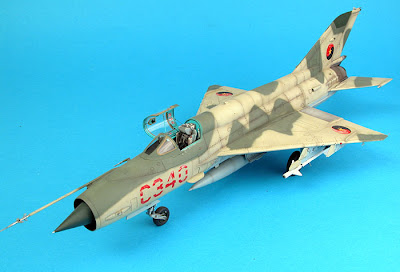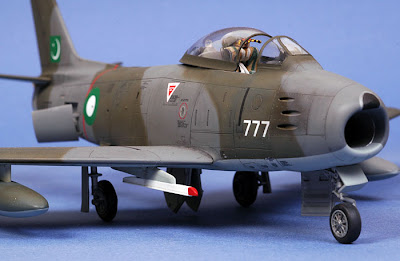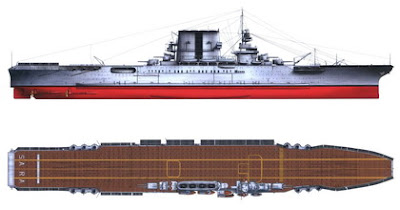Debut pertamanya pada
Aero India 2007 cukup mengundang perhatian banyak orang. Pesawat ini sudah
pasti menjadi kekuatan baru bagi armada udara Rusia. India sebagai pelanggan Fulcrum telah menunjukkan pula keinginan kuat untuk mengakuisisinya.
Pengembangan MiG-29M/M2
Tampilan
MiG-35 (NATO = Fulcrum-F) sebenarnya sudah tidak asing lagi bagi para pengamat dirgantara. Bentuknya
identik dengan varian MiG-29 lainnya, hanya saja muatan teknologinya lebih
canggih. Sebagai pengembangan dari MiG-29M/M2 Fulcrum-E, varian MiG-35 memang memiliki banyak keunggulan dan disiapkan
untuk menjadi pengganti bagi armada lawas MiG-29 Fulcrum-A maupun pesawat lainnya yang sekelas. Kapasitas bahan
bakarnya lebih besar dari Fulcrum-E
dan dilengkapi empat sistem fly by wire
untuk sistem kontrol terbangnya. Kemunculan proyek MiG-35 sendiri tidak lepas
dari campur tangan Menteri Pertahanan Rusia (Sergei Ivanov) yang ingin mengaplikasikan perangkat penjejak bernama optical locator system (OLS) lansiran NII-PP dan radar AESA Zhuk-AE rancangan NIIR Phazotron pada pesawat tempur garis depan Rusia. Singkatnya, RSK MiG kemudian
mengeluarkan varian MiG-35 (single seat)
dan MiG-35D (two-seat). Karena
dirancang sebagai pesawat multi-misi,
MiG-35 juga mengadopsi sejumlah teknologi dari varian MiG-29K/KUB Fulcrum-D yang beroperasi dari kapal induk.
Varian awak ganda MiG-35D Fulcrum-F sedang melakukan akrobatik
udara pada acara MAKS 2007. Sebagai ajang promosi, pada tahun itu juga pihak RSK MiG memboyong MiG-35D pada acara Aero India 2007.
Varian MiG-29M Fulcrum-E yang menjadi dasar pengembangan MiG-35. Pihak MiG OKB mengembangkan MiG-29M sejak tahun 80an, namun batal diproduksi massal karena bubarnya Uni Soviet dan munculnya resesi ekonomi di Rusia pada awal tahun 90an.
Sistem Avionik & Persenjataan
Untuk urusan avionik,
MiG-35 dijejali dengan barbagai perangkat sensor terbaru. Salah satunya adalah
adalah perangkat OLS yang dihubungkan dengan helmet-mounted
target designation system dan ground
controlled interception (GCI). Ketepatan deteksi dari perangkat ini sangat
mengagumkan. Bukan hanya target di udara saja, target di permukaan bumi macam
tank atau kapal perang bisa dideteksi dengan ketepatan tinggi dari jarak yang
tidak mungkin dilihat mata telanjang. Display-nya
pun dapat dipilih dalam mode inframerah, TV, atau kombinasi keduanya. Karena
itu pilot MiG-35 bisa melihat tampilan target beserta informasinya melalui tiga
layar LCD multi-function display
(untuk varian MiG-35D, pada kokpit WSO dipasang empat LCD) berwarna. Kemampuan
deteksi OLS sendiri secara garis besar adalah :
Untuk target di udara
- Dapat
mendeteksi target tanpa gas afterburning
dari jarak 45 km.
- Mengidentifikasi
target dari jarak 8-10 km.
- Dapat
mengestimasi target pada jarak hingga 15 km.
Untuk target di permukaan
- Dapat
mendeteksi target sekelas tank secara efektif pada jarak hingga 15 km.
Untuk kapal induk sekitar 60-80 km.
- Mengidentifikasi jenis tank dari
jarak 8-10 km. Untuk
kapal perang sekitar 40-60 km.
- Dapat
mengestimasi target pada jarak hingga 20 km.
Untuk urusan radar, MiG-35 sudah mengadopsi radar Phazotron Zhuk-AE berkemampuan active
electronically scanning aray (AESA). Radar ini sudah kompatibel dengan perangkat OLS yang menggantikan sensor IRST.
Selain itu, sistem AESA mampu menangkal serangan ECM lawan, mendeteksi secara
simulatan target di darat dan udara secara bersamaan, dan jarak deteksinya
lebih jauh dari radar Zhuk-M. Untuk pertahanan defensif, perangkat seperti radio
electronic reconnaissance, electronic counter measures, optronic systems, atau laser
emission detector dapat dipasang pada tiap wing tip. Jika
perangkat ini mendeteksi adanya rudal yang mengejar, sistem pertahanan defensif
akan terhubung secara otomatis dengan decoy
dispensers untuk segera melakukan pengecohan. Karena bersifat multifungsi,
MiG-35 dapat menjalankan misi tempur berbeda sekali terbang pada kondisi cuaca
apapun.
Tampilan kokpit pilot MiG-35D Fulcrum-F tampak
dilengkapi dengan tiga LCD dengan ukuran yang cukup besar. Desain kokpitnya dirancang secara egronomik sehingga pilot dapat menerbangkan pesawatnya dengan nyaman.
Kokpit belakang MiG-35D untuk Weapons System Officer yang dilengkapi
dengan empat LCD ukuran besar. MiG-35D dirancang sebagai pesawat multi-misi dengan misi utama sebagai pesawat serang darat dan anti-kapal, sehingga dibutuhkan dua awak untuk dapat mengoperasikan pesawat yang dilengkapi sistem terbang dan persenjataan yang kompleks. Selain itu MiG-35D juga dapat berfungsi sebagai pesawat latih-tempur.
Tampilan radar Zhuk-AE lansiran NIIR Phazotron pada hidung MiG-35D. Radar Zhuk-AE merupakan jenis Active Electronically Scanning Array (AESA) yang dapat mendeteksi 30 target dari jarak 130 km, dimana 6 diantaranya dapat langsung terkunci.
Lebih jauh lagi, RSK MiG bekerjasama
dengan Elt Elettronica asal Italia akan mengembangkan multifunction self-protection jammer terbaru untuk MiG-35. Tentunya
hal ini merupakan keinginan dari RSK MiG agar MiG-35 dapat menghadapi
penempur-penempur Barat generasi keempat, bahkan generasi kelima. Untuk
persenjataannya, MiG-35 dilengkapi dengan satu kanon Gryazev Shipunov GSh-30 kaliber 30
mm (150 peluru) dan sembilan pylon dengan jenis persenjataan yang
biasa dibawa MiG-29 seperti rudal anti-pesawat AA-12 Adder, AA-11 Archer, AA-10 Alamo, hingga bom pintar KAB-500L/Kr dan rudal anti-kapal Kh-31A
(AS-17 Krypton).
Tampilan layout MiG-35D Fulcrum-F lengkap dengan berbagai jenis avionik dan persenjataan yang dapat dipasang. Berdasarkan teknologi yang diusung, MiG-35D masuk kategori pesawat tempur generasi keempat + (plus) seperti halnya Rafale, F-16C Block-50, dan Eurofighter Typhoon.
Mesin Klimov RD-33MK
Sebagai sumber tenaga, RSK
MiG mengadopsi mesin turbofan Klimov tipe RD-33MK yang juga mentenagai MiG-29K/KUB.
Mesin ini mempunyai maximum thurst
9.000 kgf (RD-33 = 8.300 kgf) dan dilengkapi vector thrust nozzles yang dapat meningkatkan combat efficiency hingga 12-15%. Karena dipakai juga oleh varian Fulcrum-D, tentunya mesin ini dilengkapi
lapisan anti korosi yang intensif. Hal yang sama berlaku juga pada setiap
bagian vital pesawat. Alhasil MiG-35 dapat pula menjalankan misi tempur maritim
layaknya Su-33 Flanker-D atau
F/A-18E/F Super Hornet.
Tampilan mesin RD-33MK yang dirancang oleh Klimov OKB. Mesin ini dapat dilengkapi dengan perangkat vectored thrust nozzles yang dapat meningkatkan manuver tempur hingga 15%. Mesin RD-33MK juga tidak mengeluarkan asap (smokeless).
Spesifikasi MiG-35 Fulcrum-F
- Kru : 1 (MiG-35) atau 2 (MiG-35D)
- Panjang : 17,3 m
- Lebar sayap : 12 m
- Tinggi : 4,7 m
- Berat kosong : 11.000 kg
- Berat maksimum take-off : 29.700 kg
- Mesin : 2 x Klimov RD-33MK afterburning turbofan. Daya dorong normal 53 kN/mesin
- Kecepatan maksimum : 2.400 km/h (at altitude) atau 1.450 km/h (at sea level)
- Ferry range : 3.100 km dengan tiga external fuel tanks
- Combat range : 1.000 km
- Tinggi : 4,7 m (15 ft 6 in)
- Ketinggian maksimum : 19.000 m
- Rate of climb : 330 m/s
- TWR : 1,03
- Senjata internal : 1 x kanon Gryazev Shipunov GSh-30-1 kaliber 30 mm dengan kapasitas 150 peluru
- Hardpoints : Sembilan titik cantelan senjata dapat membawa muatan total seberat 6.500 kg dengan kombinasi rudal anti-pesawat, rudal serang darat, rudal anti-kapal, rudal anti-radiasi, berbagai jenis roket, bom pintar, dan bom konvensional
- Rudal anti-pesawat (air to air missile) : R-27, R-73, R-77
- Rudal serang darat (air to surface missile) : Kh-25MAE, Kh-29L/TE, Kh-35, Kh-38ME
- Rudal anti-radiasi (anti-radiation missile) : Kh-31PD
- Rudal anti-kapal (anti-ship missile) : Kh-31AD
- Bom pintar : KAB-500Kr, KAB-500L, KAB-500S-E GLONASS
- Bom konvensional : FAB-250, FAB-500
- Roket : S-8, S-13, S-24, S-25
































































